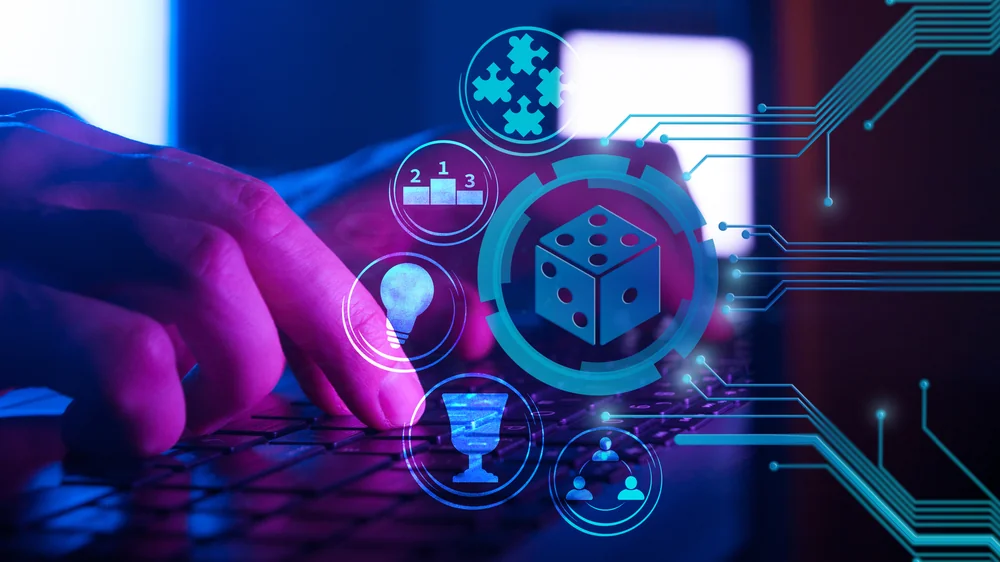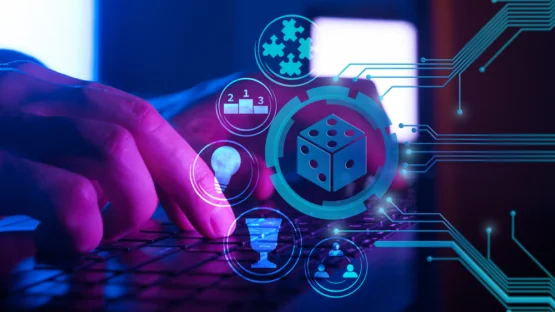Gamification, the concept of using gaming elements in a non-traditional setting, has long been criticized as at best, a banal pastime, and at worst, a devious manipulation tool employed by unscrupulous companies to acquire profit. However, supporters suggest the opposite: that gamification is a science that utilizes a variety of well-established tools and can have a beneficial impact if employed for the right reasons.
Having recently found its usage in numerous industries, such as online learning, human resources training, and even improving health outcomes, gamification could find its next use case in longevity. According to Keith Comito of Lifespan.io in an interview with The Enjin Room Podcast, there is potential for “incentivizing you to take care of yourself.”
What is gamification?
Gamification has acquired numerous definitions over the years; however, one of the most succinct is from Brian Burke from his book Gamify: How Gamification Motivates People to Do Extraordinary Things, describing it as “the use of game mechanics and experience design to digitally engage and motivate people to achieve their goals.” Burke is a research VP at Gartner, and he suggests that gamification includes three key elements—game mechanics, experience design, digital engagement—designed to motivate people to change or alter their behaviors.
This links in concepts from psychology, behavioral science, and pedagogy:
- Accomplishment: Players are rewarded for doing a specific action in the form of badges, positive messages, monetary rewards, new unlocked levels, etc. This potentially triggers the well-known dopamine reward pathway in the brain.
- Empowerment: By achieving milestones or leveling up, players feel empowered with a sense of achievement. This encourages them to continue.
- Social influence: By utilizing tactics such as group quests and multiplayer modes, a social element is added to the game. Social networking features can also be included.
- Ownership: Elements such as avatars and collectibles play into players’ senses of ownership and uniqueness within a gaming environment. This helps them take responsibility for their actions in that environment.
- Scarcity: Prizes or achievements that are limited in number or are considered ‘rare’ encourage players to acquire them.
- Unpredictability: While repetitive actions can build results, they can also become boring, causing players to become disinterested. Different mechanics, such as quests and storytelling, can promote player interest.
- Avoidance—the sunk cost bias is one wherein a person continues an action even when it becomes unprofitable due to time, finances or other resources invested. The game works for positive stimuli, a player is unwilling to risk progress made so far and give up.
How is gamification used now?
In an industry estimated to reach a value of $30.5 billion by 2025, gamification is becoming increasingly employed across a variety of industries and spheres, with an equally vast range of outcomes, such as:
- Online learning: Platforms such as Coursera and DuoLingo utilize gamification practices to encourage their users to continue to engage with educational material. This often includes videos, story-telling, and quizzes that catch and keep the attention of their users.
- Corporate training: The pharmaceutical giant AstraZeneca implemented a voluntary gamified training program to update their agents on a new drug. The program, called “Go to Jupiter”, reportedly achieved 97% engagement rates among employees.
- Health outcomes: Over 10 years ago, the health insurance company Aetna partnered with MindBloom to introduce a gamified experience to their clients in order to boost their health outcomes.
How can gamification be integrated into longevity?
Organizations such as Humanity are already taking steps into the intersection of technology and human health.
For example, this company’s proprietary app utilizes wearables to track biomarkers and behavioral tracking to deliver users scores that are based on their rates of aging compared to their biological ages. Like many gamified projects, it requires users to meet specific goals, such as getting a certain amount of exercise per day and consuming proper nutrition, and social features, such as comparisons to average scores and that of friends.
CureDAO is another platform using gamification methodologies to improve human health outcomes. Still in its initial stages, this DAO employs a tokenomics system to encourage users to engage in healthy behaviors. It also supports collaboration by rewarding cooperation. However, behind the platform, a wider game is at play, seeking to utilize data to “discover how millions of factors like foods, drugs, and supplements affect human health.” The platform draws on the power of all this data, employs open-source technology, and seeks to uncover how different factors affect human health and how they can be modified.
These platforms highlight interesting concepts of how gamification strategies can be engaged to deliver real-life outcomes within the longevity field. Further solutions may seek to employ other blockchain-related technologies, such as:
- Tokenomics systems: The goal is to create a reward system that allows human health outcomes to be connected to digital economics. For example, rewarding behavior that improves health or offering rewards for data sharing. This could utilize such technologies as Pay-to-Earn or Play-and-Earn.
- Virtual identity: This draws from the sense of ownership, as a digital persona (avatar) adapts or evolves alongside the actual human engaging with the system.
- Social networking: In a blockchain-based network, participants constantly interact with one another. This can also add a competitive element as participants could compete with friends/community to meet goals and objectives.
Are there any drawbacks?
Although gamification technology has great potential for promoting longevity, it is not without its drawbacks. Like the majority of technology, questions arise as to how data will be managed and which specific data is private and public. The inherent risks of data security, such as fraud and identity theft risks, mean that organizations deciding to engage in gamification technology for longevity purposes need to pay additional attention to how data is stored and whether it meets international security standards.
In addition to this, existing challenges within the blockchain sphere, such as voting protocol fairness issues, mean that to manage equity, mechanisms must be addressed at early project stages to avoid further challenges down the line.
Summary
Gamification is a long-established and considerably effective strategy in many spheres. Its use in the longevity field is still in its early stages, with some projects recently emerging, such as CureDAO and the Humanity app.



